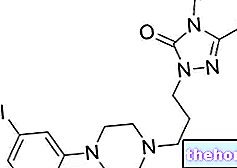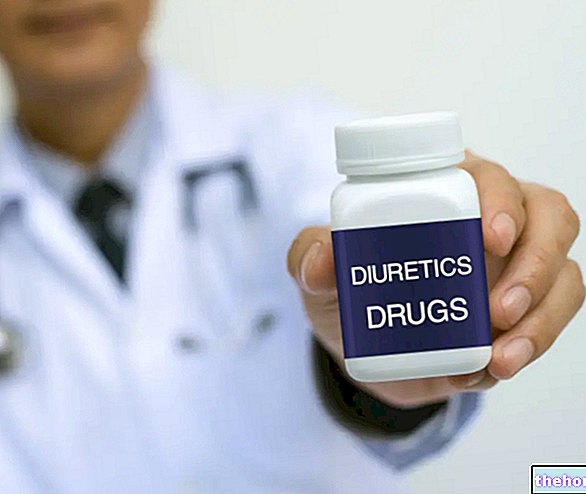Definition
In a pregnant woman, we speak of preeclampsia or gestosis when, with gestational hypertension (≥140 / 90 mmHg), an excessive presence of protein in the urine is associated (proteinuria ≥0.3 g / 24 hours), hence resulting in generalized edema due to fluid retention and excessive weight gain Typically, gestosis occurs after the 20th week of gestation.
Causes
The causes of preeclampsia are not yet known exactly. Up to now, the progressive development, during pregnancy, of some alterations of the placenta and of the blood vessels that supply it, capable of influencing the maternal-fetal exchanges, has been hypothesized.
Risk factors are numerous and include: chronic hypertension prior to gestation, family or personal predisposition for the condition, very young age or older than 35, obesity, twin pregnancy, dietary salt abuse and comorbidities (diabetes, liver disease or kidney disease, antiphospholipid antibody syndrome, etc.).
Symptoms
Preeclampsia can gradually evolve or begin suddenly after the 20th week of gestation, with symptoms that are often vague and vague, such as: headache, blurred vision, nausea and vomiting. The alarm signal for gestosis is the combination of high blood pressure (≥140 / 90 mmHg) and high proteinuria (≥0.3 g / 24h). If neglected, preeclampsia can lead to epigastric pain, oliguria, thrombocytopenia, fetal growth retardation, and other manifestations.
The information on Preeclampsia - Medicines for the Treatment of Gestosis is not intended to replace the direct relationship between health professional and patient. Always consult your doctor and / or specialist before taking Medicines for the Treatment of Gestosis.
Medicines
Preeclampsia (or gestosis) is a complication that can develop during pregnancy. The condition is characterized by an excessive rise in blood pressure (hypertension), often in combination with the finding of an excessive amount of protein in the urine (elevated proteinuria).
Typically, gestosis occurs after the 20th week of gestation and affects about 5-8% of future mothers previously normotensive or suffering from hypertensive problems prior to pregnancy (in the latter case, we speak of preeclampsia superimposed on chronic hypertension).
Preeclampsia can progress gradually, onset suddenly, or remain silent with nonspecific symptoms (such as headache, blurred vision and nausea) to degeneration of the general picture into eclampsia. If gestosis is not managed correctly, very serious and life-threatening complications can occur, both for the expectant mother and for the baby.
In order not to run this risk, it is advisable for the pregnant woman to be subjected to careful monitoring to constantly check the progress of the disease and to adhere scrupulously to the doctor's instructions.
Treatment of preeclampsia can vary depending on the case, but generally involves strict rest, blood pressure control (using anti-hypertensive drugs and a low-sodium diet) and the administration of magnesium sulfate. Clearly, during pregnancy, never take any medications, vitamins or supplements without first talking to your doctor.
If, despite the measures adopted, the gestosis does not improve, hospitalization is required for further specialist investigations and for any necessary treatment.
Uncomplicated preeclampsia is reversible during the puerperium: it usually resolves spontaneously within 6-12 weeks of delivery.
The following are the classes of drugs most used in the therapy against preeclampsia, and some examples of pharmacological specialties; it is up to the doctor to choose the most suitable active ingredient and dosage for the patient, based on the severity of the disease, the state of health of the patient and his response to treatment:
- Magnesium sulfate: is a drug capable of depressing nervous excitability, therefore it is useful for preventing eclamptic seizures. While not an antihypertensive drug, magnesium sulphate also contributes to transiently lowering blood pressure 30 minutes after a dose of load.
- Anti-hypertensive: anti-hypertensive drugs seem to be useful in avoiding the increase in blood pressure in the pregnant woman suffering from preeclampsia, although no precise indications are currently available on when to undertake the treatment. The hypotensive drugs indicated for the management of preeclampsia are α-Methyldopa (currently, it is considered the first choice antihypertensive drug in pregnancy) and beta-blockers, such as propanolol, labetalol and metoprolol. In the third trimester of pregnancy, the latter category of medicines can determine as a side effect: bradycardia, hypotension and fetal / neonatal hypoglycemia. Other drugs with hypotensive action that can be prescribed in case of preeclampsia are calcium antagonists; in particular, long-acting nifedipine is the most studied and preferred calcium antagonist in pregnancy to date. Contraindicated anti-hypertensive drugs, therefore NOT to be used in pregnancy, are ACE inhibitors and sartans (angiotensin II receptor antagonists), as their use correlates with oligohydramnios, bone malformations, anuria, renal insufficiency, pulmonary hypoplasia and others fetal-neonatal complications.
- Calciparin (Calcic Heparin): in cases where there is no excessive reduction in the number of platelets (thrombocytopenia), it can be indicated to pregnant women with preeclampsia to try to improve the placental circulation. In pregnant women with established thrombophilia, this therapy is still under discussion. Heparin is also used for the prevention of preeclampsia; it should be noted, however, that there is currently no clinical evidence on the efficacy of this prophylaxis.
- Corticosteroids: the administration, via injections, of steroid drugs can stimulate the pulmonary maturation of the fetus, useful in case it is necessary to stimulate delivery before the 34th week of gestation.
- Acetylsalicylic Acid (Aspirin): In women at high risk for developing preeclampsia, low-dose acetylsalicylic acid (100 milligrams per day) is recommended from the 12th week of pregnancy until delivery. This prophylaxis decreases the risk of premature birth.
- Calcium: supplementation to the normal supply of the mineral could be useful in populations with a low dietary regime (<900 mg / day), at doses above 2000 mg / day. In women with a normal dietary intake of calcium, however, supplementation does not bring any benefit.
The completion of childbirth can be considered a real cure for preeclampsia, as it resolves the disease in the pregnant woman (within one or two days) and allows the fetus to leave an environment that may no longer be suitable for its growth and survival.
Clearly, childbirth can be induced or carried out through a caesarean section only after a careful assessment of the possible risks for the unborn child, more or less important depending on the gestational age.




.jpg)


















-nelle-carni-di-maiale.jpg)




